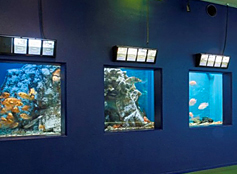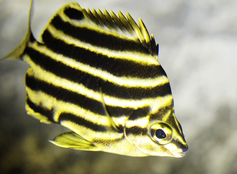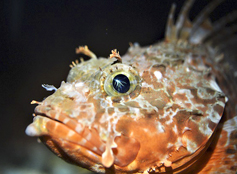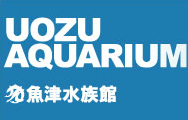
1390 Sanga Uozu-shi Toyama-ken
Japanese

The Sea Life of Toyama Bay
Deep Sea
Toyama Bay rapidly plummets to incredible depths near the coast, to a maximum depth of 1,250 meters. At a depth of 200 meters, the water is about 10°C, but from 300 meters down to the bottom, you'll find what is known as Japan Sea Proper Water, which is just 1–2°C.
Giant Pacific Octopus
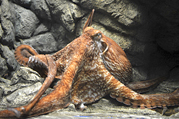
The largest kind of octopus in the world. They lurk in the shadows of rocks, waiting for their prey: when something tasty passes by, they suddenly reach out with their eight long arms to quickly grab it.
Porous-Head Eelpout
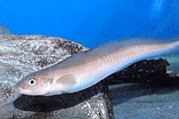
An iconic deep sea fish of Toyama Bay. Their soft bodies are covered in mucus. They are popular as food, too, commonly served in clear soups or deep-fried.
Red Queen Crab
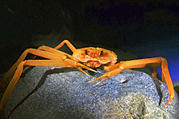
These large crabs live in the deep-sea sand and mud at the bottom of the Sea of Japan.
They are commonly eaten boiled, and known for their delicious flavor. The name comes from the fact that their shells are red even before boiling.
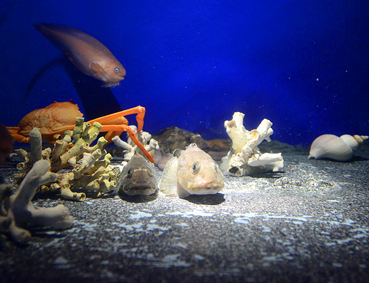
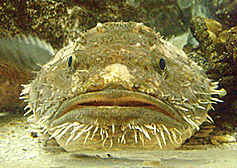
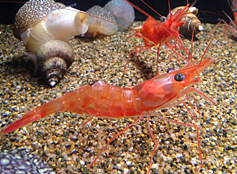
Surface Layer
Small and medium-sized temperate-zone fish that live in Toyama Bay's surface layer can be seen in these tanks. Of particular note is the pinecone fish, whose glow was discovered at the original Uozu Aquarium during a blackout one night in 1914.
Goldeye Rockfish
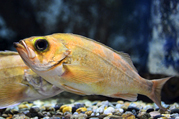
These fish live in deep reefs. Their young attach to drifting seaweed, where they grow up.
After mating, the eggs hatch inside the parent, who gives birth to live young.
Pinecone Fish
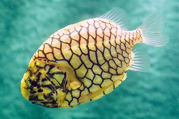
These famous glowing fish have a pair of phofogenic organs in their lower jaw that creates a faint glow.
The glow of the pinecone fish was first discovered at the original Uozu Aquarium.
Devil Stinger
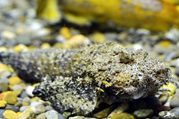
Taking advantage of their camouflage, which makes them look just like rocks, these fish use their finger-like pectoral fins to "walk" along the ocean floor. The spines on their dorsal fins, along their backs, are highly venomous.
